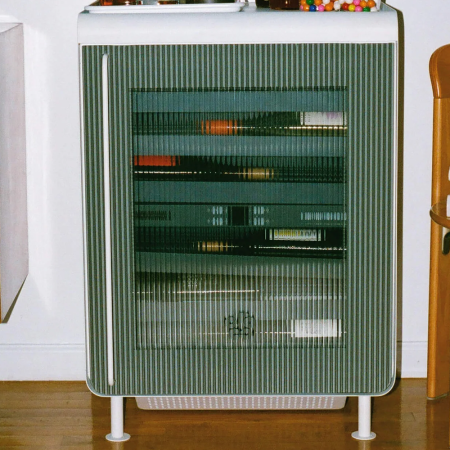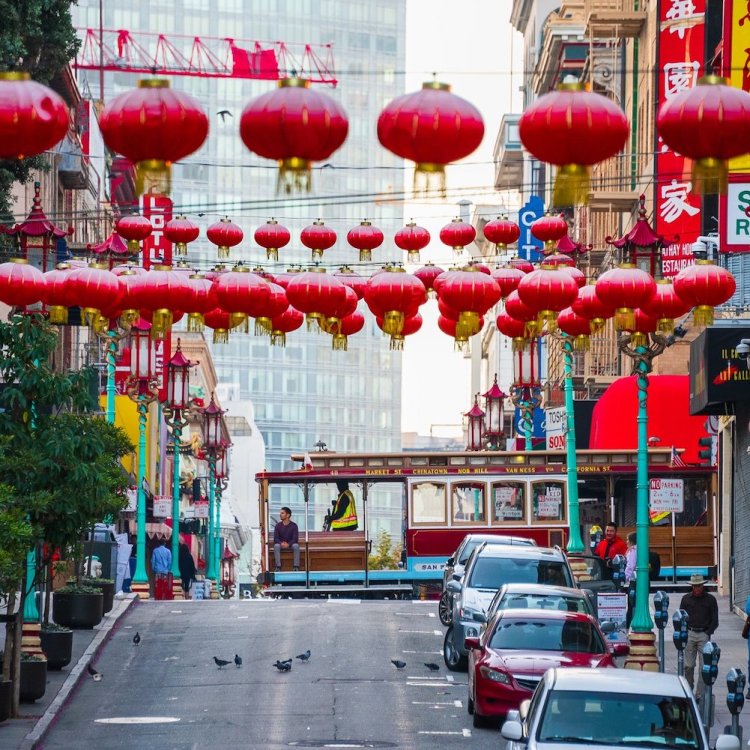How was your coffee this morning?
If you bought a $5 cup at your local artisanal roaster, probably delectable. If you made it at home through a crusty-eyed 5 a.m. gaze, probably less so.
But you don’t need a commercial-grade setup to make top-shelf joe.
To help you perfect your morning cuppa with the supplies already at your disposal, we asked five brewing experts to detail their personal recipes.
Below, find their step-by-step instructions for four different coffee-making methods: coffee pot, french press, pour-over and AeroPress. In service of keeping this as digestible as possible, we’re sticking to hot coffee, no espresso. In other words: How to make a Dale Cooper-approved damn fine cup of coffee, plain and simple.
And if you’re a Keurig person, please, for the bean’s sake, bring your old coffee equipment out of retirement.
Left photo: Jackson (right) in Peru visiting Peace’s farmer co-op partner Cooperativa Agraria Cafetalera Pangoa
French Press: Jackson O’Brien
Head Barista and Espresso Educator at Peace Coffee
What’s your personal coffee setup look like?
In my home I have a Bonavita eight-cup coffee brewer with a thermal carafe, one of about a dozen auto-drippers I trust. My manual brewer collection includes a 10-cup Chemex, a Hario Woodneck dripper and an AeroPress, though I’m looking to get a mid-century hand-blown Chemex if your readers know anyone who has one they want to get rid of. I have two gooseneck kettles, one Hario stovetop and one Bonavita electric. I have a worn-out Capresso Infinity grinder, but I’m hoping to upgrade it to a Baratza Virtuoso the next time I have $200 burning a hole in my pocket.
Take us step-by-step through your process …
1. Bring at least a liter of water to 205°F. If you don’t have a fancy temperature-programmable kettle, this is best done by bringing your kettle to a rolling boil, turning the heat off when it reaches a boil, opening the lid for 30 seconds and then closing it.
2. Measure 50g coffee. For a press, I’m looking for something with outstanding sweetness and body rather than interesting aromatic notes or bright acidity.
3. Grind the coffee for a press pot. On most burr grinders, this will be the coarsest possible setting, but the grounds should be big and flaky, roughly the size of Manischewitz-brand matzo meal.
4. Preheat the press by pouring about 200ml of water from your kettle and swirling it around until the outside of the pot feels hot to the touch. Discard the rinse water.
5. Add the coffee and 800ml water from your kettle. If you don’t know what 800ml water looks like in your press, you can set the press with the coffee on a digital scale, zero it out and pour water until the scale reads 800g. The metric system is amazing! If you don’t have a scale, get a scale! It’s the single best bang-for-your-buck improvement you can get.
6. Put the lid on the press and push the filter down until it’s just below the level of the liquid. Set a timer for six minutes and go make some toast.
7. Once the timer goes off, gently “pop” the filter by pushing down on the central piston and pulling it right back up. The cake of coffee grounds should gently cascade down to the bottom of the press. Once the grounds are settled at the bottom of the press, gently press the filter all the way down.
8. Decant into my favorite ceramic replica of the standard Greek-diner amphora mug so that I can feel like Lennie Briscoe while I drink my coffee.
9. I find that a lot of folks optimistically buy press pots with the aim of making better coffee with them but stop using them because they’re pains to clean, so I’ll include my quick-and-easy cleaning instructions too. When the coffee is gone, pull the lid out halfway so that the piston is halfway up the side of the press. With one hand, pour water over the filter. With the other, spin the piston (which will spin the filter) until the press pot is about a third full. This will get the majority of the gunk off the filter. Remove the filter, give the coffee-and-water slurry a vigorous stir, and while everything is swirling around, quickly upend the whole thing into a flower pot with your favorite houseplant or into the garden. The plant will love the coffee grounds and the water, and you will love not having to scoop spent coffee grounds out of your sink.
What coffee beans work best with this method?
Peace Coffee’s Tree Hugger and Wonderland Park Espresso both make for magical press pots.
Left photo via Mike Jones
Coffee Pot: Mike Jones
Director of Retail at Variety Coffee Roasters
What’s your personal coffee setup look like?
For home coffee, I love the Breville Precision Brewer. Coffee snobs may gasp at the thought of using an automatic coffee maker, but I have been the nerdiest coffee nerd for well over a decade and I’m here to tell you: it’s OK. Home coffee machines used to all be terrible things that didn’t get nearly hot enough and produced gross-tasting murky water — that is no longer true! Coffee from the Precision Brewer is delicious and consistent, and it’s just plain convenient to use instead of struggling to pour steady concentric circles from a gooseneck kettle at 6:30 in the morning.
Take us step-by-step through your process …
1. Simply load it up with medium-ground coffee, fill with water and press a button. You can use the provided cone or use many popular pour-over cones to hold the coffee. It has a setting called Gold Cup that is carefully calibrated to achieve the standards set by the Specialty Coffee Association. You don’t need to know what that means. Just know that it’s delicious.
2. Use bottled spring water (not distilled!) as an easy way to improve quality. It’s a little pricey but totally worth it in terms of smoother and cleaner flavors.
3. Buy coffee that’s five days past roast, or let it rest before brewing. It seems counterintuitive, but freshly roasted coffee actually contains a lot CO2 that will seep out. Most of it leaves after three days or so, but we find that our coffee tastes best 7-14 days off roast — or even longer! Just make sure to grind fresh if you’re going to keep it more than a week. Otherwise getting it ground at your favorite local coffee shop is totally fine. [Editor’s note: We kept in the original linkage here. Nice one, Mike.]
What coffee beans work best with this method?
For this brewer, I’d recommend a medium-bodied coffee with a good amount of sweetness and gentle acidity. A lighter-roasted Central American or a well-developed (still lighter-roasted) African would be perfect. We have a beautiful coffee right now called La Isabel from Honduras that tastes incredible brewed on this machine.
Right photo via Betsy Sanchez
Pour-Over (Complex): Betsy Sanchez
Barista at Colson Patisserie
What’s your personal coffee setup look like?
My pour-over setup consists of the Hario V60 coffee dripper, Baratza Encore conical burr grinder, Bonavita electric gooseneck kettle and Hario V60 drip scale and timer.
Take us step-by-step through your process …
1. My go-to coffee-to-water ratio for pour-overs is 1:15.
2. Bring water to an almost boil. The sweet spot for me is around 205°F. One thing I like about my gooseneck kettle is that it’s lightning fast and has the digital temperature indicator.
3. Measure about 23g of beans and grind it to a medium-coarse grind setting (notch #15 in the Baratza Encore). I can’t emphasize enough that current and future coffee enthusiasts should invest in a decent machine for grinding beans into a consistent size, whichever brewing method you might select. You can have the full arsenal of beans that won the Cup of Excellence competition, but if you don’t properly grind it for your brew, it’ll just be such a waste.
4. Place the filter into the dripper and pre-wet it with the hot water (this is important so you don’t get the papery taste in your cup).
5. Put the carafe and dripper on top of the weighing scale.
6. Place the grounds on the filter, ensure that the coffee bed is level, and tare the scale.
7. Simultaneously start the timer on the scale as you make your first clockwise pour, starting from the edges towards the center. Stop pouring when the scale reaches 46g (double the amount of the grinds).
8. Let the coffee bloom and expand for about 30 seconds.
9. Make your second pour doing the same clockwise motion, starting from the center then outwards and stop at 150g. Let the water flow until at least the coffee bed starts to dry out one inch from the top. Note that the water should never stop flowing during this process.
10. Make your third pour, using the second pour’s motion, until it reaches 250g. Let the water flow until the coffee bed starts to dry out, at least one inch from the top.
11. Make your final pour, using the second pour’s motion, until it reaches 345g. This entire process takes about three minutes.
What coffee beans work best with this method?
My honest answer here is that I always ask baristas what their personal favorites are with their current retail selection. You know you’re in good hands when your barista actually finds time to give you a friendly deluge of information on why they like a certain coffee bean. If I’m not afforded the luxury of getting into a geek-out conversation with baristas (please don’t do this to us during the rush hour, by the way), I tend to gravitate towards the single-origin, lighter roast for pour-overs, given that you can get more subtle flavors out of it compared to medium or dark roasts.
What’s your go-to coffee mug?
My favorite mug is something that I picked up from my favorite coffee shop in SoCal: Portola Coffee Roasters. It’s the perfect small size for one serving of coffee. This may sound corny, but it’s always a happy reminder of my family living in Irvine, C.A., who introduced me to this coffee shop. My fave vessel when I’m on the go is the 8-ounce Keep Cup Brew Cork Edition. You can’t go wrong with form and function for this reusable cup.
Right photo: Tim getting a little help with his morning pour-over
Pour-Over (Simple): Tim Williams
CEO at the World AeroPress Championship (happening this November in Sydney)
What’s your personal coffee setup look like?
I brew coffee at home each morning using a Hario V60 dripper, Bonavita gooseneck kettle, Comandante hand grinder and normal kitchen scales. The 02 size Hario brewer means I can brew 400-500ml of coffee, which is about the right amount to have on hand while making breakfast for the kids. In the hours between 5 and 7 a.m., the last thing you need is a fussy or fiddly coffee preparation routine. I keep things simple.
Take us step-by-step through your process …
1. Put the kettle on to boil and weigh 30g of coffee beans into the grinder. While the kettle heats, grind the coffee. I do this by hand, and like to consider that as exercise taken care of for the day.
2. When the kettle is boiled, add the ground coffee to the brewer and filter, and pour over between 50g and 100g of water.
3. Let this bloom for about 30 seconds, then pour the rest of the water slowly until the scales hit 500g. I’m usually reading emails on my phone at this stage, and assessing anything that’s come in overnight.
What coffee beans work best with this method?
I always try to have coffee that is fresh and well-roasted in the house. By “fresh” I mean that it’s been harvested recently, as well as roasted. Coffee harvested too long ago has a starchy, dry and unpleasant character to it. By “well-roasted” I’m talking about coffee that is roasted with care and deliberate intention, more so than any one particular roasting style. I don’t like over-roasted coffee, but something that’s deliberately and conscientiously roasted a little darker can be great. I gravitate towards washed coffees from East Africa when they’re in season, and washed coffees from Central America when they’re not. I like Market Lane and Seven Seeds.
What’s your go-to coffee mug?
I’m a philistine. I still prefer the heavy, US-style diner mug. Fat handle, fat lip, holds the heat well. My friend Jenni gave me one from Gimme! Coffee in New York many years ago, and it’s busted up and scratched to hell, but still my favorite.
Left photo: Paulina claiming victory in 2017, via W.A.C.
AeroPress: Paulina Miczka
Winner of the 2017 World AeroPress Championship
The coffee-making setup:
AeroPress coffee maker with paper filters. For the coffee, on a 0-10 scale (0 being fine and 10 being coarse), grind to an 8.
The winning recipe:
1. Put 35g of coffee into your AeroPress.
2. From 0:00 to 0:15, add 150g of water at 183°F.
3. From 0:15 to 0:35, stir and keep stirring.
4. At 0:35, put filter cap (with pre-wet filter) in place.
5. At 1:05, flip the AeroPress and start pressing.
6. At 1:35, stop pressing. You should have now 90ml of the concentrated brew.
7. Add 160g to 200g of hot water and enjoy!
Coffee beans used in the competition:
Kamwangi AA from Kirinyaga, Kenya. Roasted by Fritz Coffee Company and imported by Cafe Imports.
Main image credit: Columbia Pictures via Getty Images
Nota bene: If you buy through these links, InsideHook may earn a small share of the profits
Join America's Fastest Growing Spirits Newsletter THE SPILL. Unlock all the reviews, recipes and revelry — and get 15% off award-winning La Tierra de Acre Mezcal.























